Description and cultivation of a variety of roses "Iceberg"
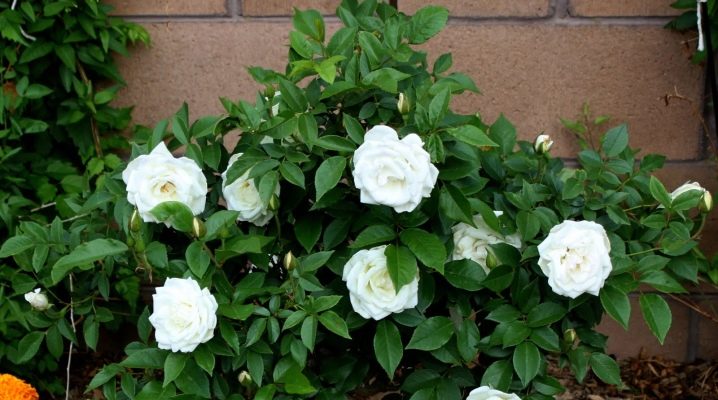
Among climbing roses, the Iceberg variety stands out for its absolute unpretentiousness. Snow-white flowers delight the owners throughout the season, do not require particularly difficult care and grow even among beginners in the gardening business.
Description
Climbing rose "Iceberg" is characterized by long flowering in large quantities, which allows you to decorate the site throughout the season. In warm climates, the plant blooms all year round. By location, it resembles a folio or hybrid tea rose and is sometimes grafted onto a stamp. This variety of the claiming group blooms twice, but only if the faded inflorescences are removed in a timely manner. The culture grows rapidly and fills vast spaces with no problem. This variety is unpretentious and safely tolerates cold and low temperatures.
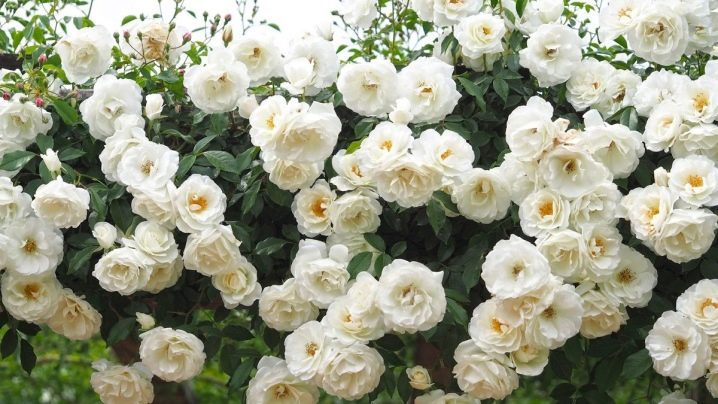
A strong, branched bush is covered with shiny leaves, painted in a light green tint. Its height is in the range from one to one and a half meters (maximum two meters in hot climates). The width of the bush ranges from 80 to 100 centimeters. The flowers themselves appear in the form of a cup and have double petals. The petals are pearly white and have a yellowish or creamy center.
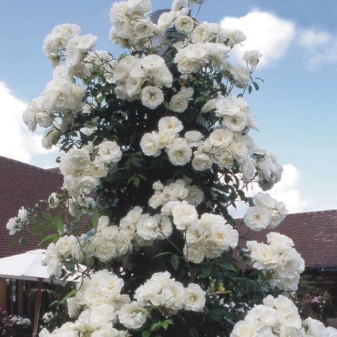
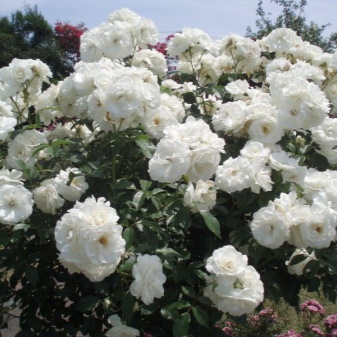
Cold summers can be accompanied by a change in the color of the rose to pale pink, and excessive heat to yellowish. The diameter of one bud reaches 9 centimeters, and from 3 to 5 flowers grow on one stem. "Iceberg" has a weak (almost zero) aroma. Flowers bloom for about 7 days and are in this state for almost a whole month.
The variety is often used in floristry, since the buds do not lose their dignified appearance even after cutting, and the stamens remain yellow all this time.
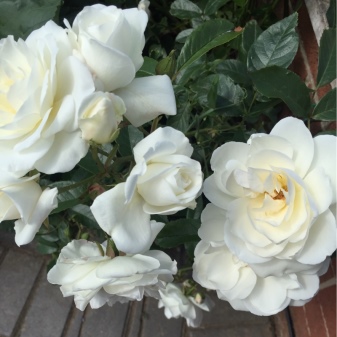

Iceberg is moderately resistant to most common diseases. Heavy rainfall leads to the appearance of black spot, but the flowers do not fall off and do not lose their original appearance. Most often, the disease manifests itself when the bushes are planted close to each other. If the climate is dry and warm, then the culture is not threatened with infection. The frost resistance of the variety is considered above average, but it does not respond to temperature jumps.
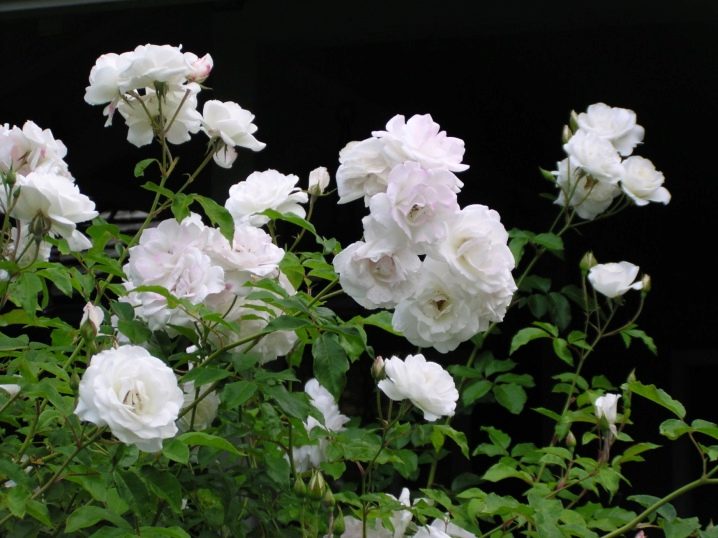
It is important to mention that the Iceberg rose is not grown for cutting, but for decorating a plot. In Europe, it is he who is most often used for the improvement of parks and streets. In Russia "Iceberg" is most often combined with mock orange and lilac. Roses are planted as separate bushes, as well as borders or associations. This variety is also grown in standard form. In this case, the inoculation is carried out at a height ranging from 100 to 120 centimeters. The crown should turn out to be round, resembling an even ball, with a diameter ranging from 50 to 60 centimeters.
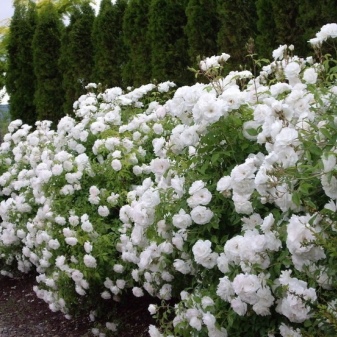

Landing
When planting a rose "Iceberg", several prerequisites should be taken into account. This variety prefers light soil rich in humus. It is important that the ground waves are not close to the surface. Successful development requires the presence of sufficient sunlight, moderate humidity, as well as protection from the winds.
However, it is best to choose partial shade for the Iceberg to prevent sunburn.
When planting, you have to dig a hole, the depth of which reaches 100 centimeters, and the diameter does not exceed 65 centimeters. The hole is to be filled with a mixture of sand, humus and turf.To create it, you will have to take part of the humus, part of the sod soil and two parts of the sand. "Iceberg" will respond positively to the introduction of a bucket of wood ash or approximately 150 grams of mineral fertilizers. If the land where the roses are planted is clay, then it will have to be supplemented with sand, and also enriched with humus.


Sandy soil is also subject to adjustment: it is drained with sawdust or mixed with compost. The site itself must be flat and unspoiled by the presence of depressions in which water will stagnate. It is worth mentioning that if a breakdown of a whole rose garden is planned, then the depth of the pits is reduced to 40 centimeters. It is better to plant roses at the end of April: by this time the snow should have already melted, and the earth should warm up slightly.
However, if winter has dragged on, planting is postponed to a later date.


In any case, you should wait until the air temperature exceeds 10 degrees. Approximately 3 or 4 hours before the start of the procedure, it is recommended to soak the seedlings in water, so that after the plant it is easier to endure the procedure. In addition, you can not do without pruning - removing roots, the length of which exceeds 30 centimeters, as well as unnecessary shoots. When lowering the seedling into the ground, there should be no more than four shoots on the bush. When the rose is in the hole, the soil will need to be slightly compacted.
Care
Care for the Iceberg variety is, in principle, standard. Its main components are watering and feeding. Irrigation is carried out according to the situation, while the land should not dry out, but it should not be poured either. It is necessary to direct the water precisely at the root, making sure that the drops do not end up on the bush itself. Ideally, the water should be slightly warmed up. The best option would be to use a liquid that has settled in the sun.

If we talk about fertilizers, the Iceberg rose welcomes humus, compost and peat. In addition, we must not forget about mulching, which is carried out in spring and autumn (before the start of wintering). By the way, it will be most convenient to introduce organic matter already as part of the mulch, embedding it in the trunk circle. At the beginning of summer, either mineral complexes or ammonium nitrate are added twice.
An alternative can be a couple of buckets of nettles, infused in 200 liters of water.


For the winter, it is recommended to additionally cover the bushes, having previously bent the plants to the ground and fixing them. For winter protection, spruce paws are most often used, which are removed in the spring. After removing the roses from the shelter, the soil should also be loosened. Before wintering, the plant is freed from all damaged, dried, diseased or otherwise affected parts.
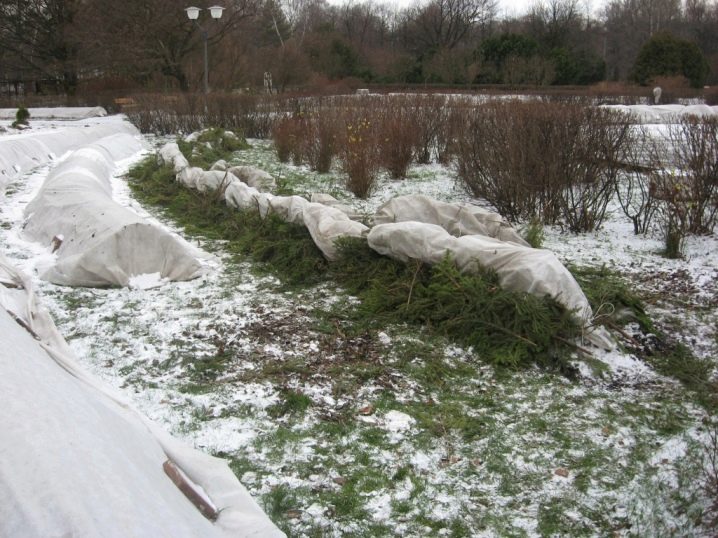
Pruning is done either in the spring or in the fall - it is not necessary to do this twice. During this procedure, shoots that are more than three years old are removed, and last year's shoots are only shortened by 3 buds. Somewhere between May and August, it is important to regularly loosen. This procedure ensures the transportation of oxygen to the root system, which favorably affects their effective development.

Rose "Iceberg" most often gets sick with black spot. The reason for it is either the effect of excessive moisture, or the presence of stagnation in the soil. Sometimes it happens that the disease spores are carried by the acquired seedling, and, as you might guess, the growing process is accompanied by the development of the disease. It is important to dig up the infected plant, transplant to an area located away from any other flowers, and treat with antifungal agents. If the desired effect is not achieved, then the bush will simply have to be destroyed.
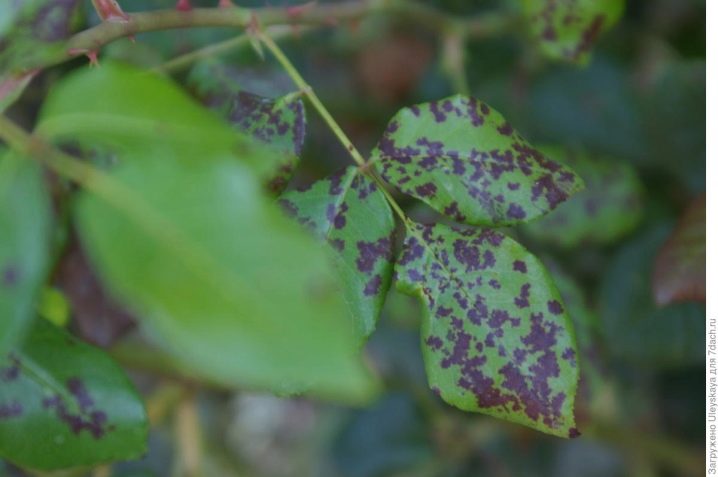
Reviews
Gardeners love Iceberg roses, considering them not only unpretentious, but also very beautiful. Novice gardeners note that the plant does not require constant attention and only minimal care is enough for it.Already in the first year of its life, the bush is covered with large and lush snow-white flowers on powerful shoots. True, the bush does not always reach a couple of meters promised by the breeders, but this is not considered a big drawback.
It is more convenient to plant a rose on a column-shaped support.
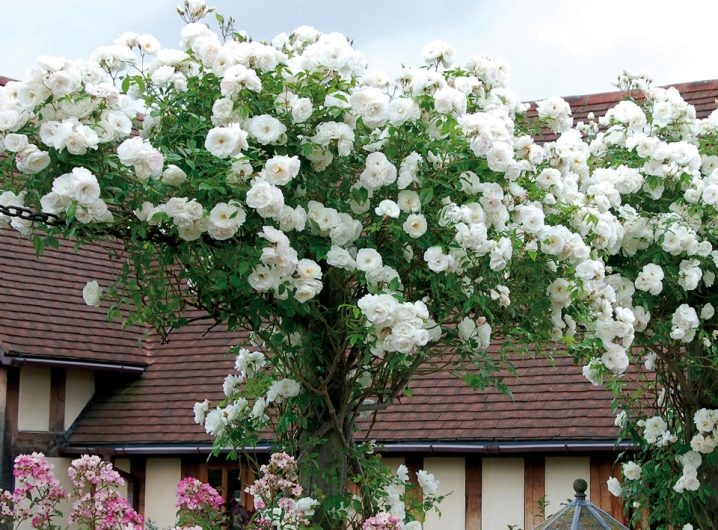
"Iceberg" practically does not get sick, perfectly tolerates cold weather and is content with basic dressings. In principle, she is able to survive even at -30 degrees without additional cover. The bush develops well even in conditions of partial shade, when the sun's rays illuminate the plantings only in the morning hours. Rose "Iceberg" turns out to be used to decorate gazebos and alpine slides, lawns, fences and other details of landscape design.
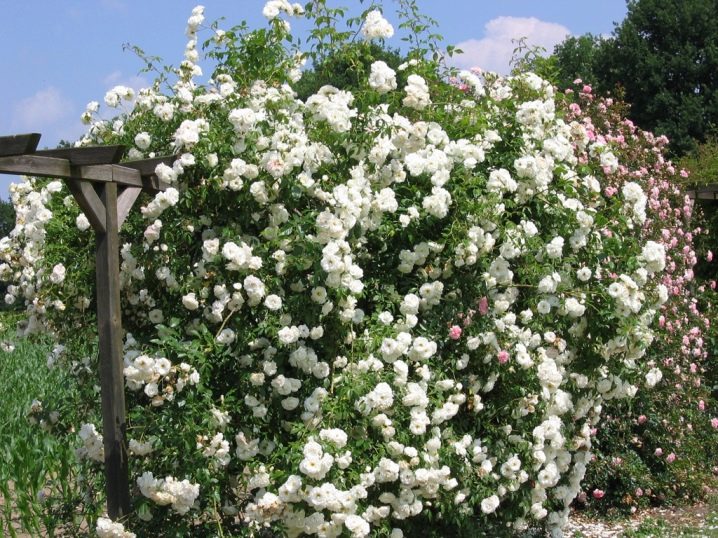
Although this variety blooms in July, it looks most beautiful in autumn. In principle, you will still be able to admire the plantings until the end of October, if the days are warm and humid.
Absolutely not fading, they retain the graceful shape of the glass and a delicate snow-white shade with pink notes.
How to properly plant and care for a climbing rose, see the video below.

































































































The comment was sent successfully.